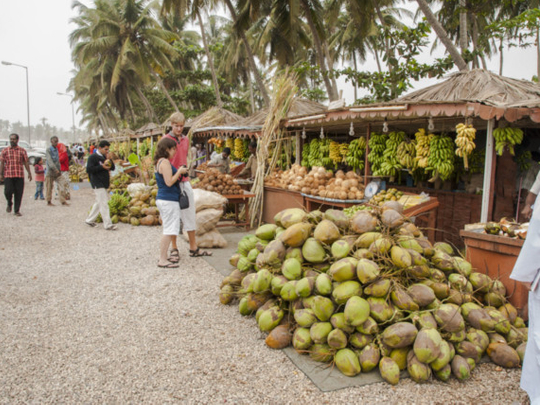
Muscat: Agricultural researchers with the Sultan Qaboos University (SQU) see Oman’s southern region Dhofar as a potential hub to grow vegetables and fruits.
Two SQU faculty members carried out a study to explore the potential to increase domestic production of vegetables and fruits within the country.
A crop scientist and a professor with the Natural Resources Economics Department have come out with a suggestion that the climatic conditions in the Dhofar region were most suitable for the region to be made the core area for growing vegetables and fruits.
The two researchers conducted a case study on Salalah considering its milder weather conditions compared with the other regions of Oman. Salalah receives seasonal rainfall as a result of monsoon winds from the Indian Ocean saturated with cool moisture and heavy fog. Though the monsoon starts in late June and extends to late summer, the area experiences occasional rains= for a good part of the rest of the year. Thus, the scientists believe that Salalah is a suitable area for expansion of vegetable production.
“The average temperature range in Salalah is from 22 to 28 degrees Celsius. This means that onions, garlic, tomatoes, watermelons, bananas, cucumbers and chillies can be comfortably grown in this area,” Dr Mumtaz Khan, Associate Professor in the Department of Crop Sciences, said.
“Other crops such as potato, cabbage, carrot, cauliflower, broccoli and lettuce can be comfortably grown even though their temperature range is about four degrees Celsius lower than that of Salalah,” says Dr Msafri Mbaga, Assistant Professor in the Department of Natural Resource Economics.
The researchers also studied the soil and water requirements for cultivating different varieties of fruits and vegetables and compared them with the conditions in Salalah.
“The pH of the soil is about 7.8 whereas the crops mentioned above require a pH range of 5.5 to 7. This means the pH value of the soil is not a constraint to the crops identified for cultivation. Any limitations of pH can be managed through better nutrient and fertiliser management, “Dr Khan pointed out,
The study substantiates the fact that Salalah’s climate, soil, and land and water availability are conducive for growing fruits and vegetables. This will improve on-farm income and possibly lead to value chain opportunities. The researchers observed that the current land use in these areas is dominated by fodder for animals, and water management practices are highly inefficient.
The crop scientist, who also explored the extent of arable land in the country, said that it has about 2.2 million hectares (mha) of land available for farming which is equivalent to seven per cent of the total area of the country.
However, the actually cropped area in Oman currently is about 62,000 ha or 2.8 per cent of the total arable land. According to Food and Agricultural Organisation (FAO) statistics, Oman imported approximately 2.2 million tonnes of fruits and vegetables worth $1.15 billion (Dh4.22 billion) from 2000 to 2007. Onions, oranges, potatoes, garlic and tomatoes are the five leading vegetables and fruits imported to the Sultanate.
Studies show that Omanis prefer producing high value vegetables to cereal crops. Primary crop production in Oman in 2005-2007 was 486,872 metric tonnes of which the share of fruits was 353,072 metric tonnes and that of vegetables was 102,606 metric tonnes.
During the same period, Omani farmers produced only 26,206 metric tonnes of cereals. In addition to vegetables produced locally, Oman imported 148,345 metric tonnes during the same period. This is what prompted the researchers to explore the possibility of increasing vegetable production in the country.
“If Oman chooses to increase vegetable production, then it has to come from a major shift in its current land and water use practices, because almost all of its cultivable lands and available freshwater are fully utilised at present,” Dr Mbaga said.











